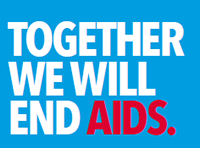 Imagine a life where you live on less than two dollars a day. You have been saving for months to afford a trip to the health clinic. With your payment in hand, you walk three hours to get to the nearest clinic, carrying your young children with you. When you finally arrive, you want to be able to receive information and testing for HIV and also pick up contraception to prevent pregnancy, but you’re told that the clinic does not provide both services. You can get tested for HIV, but you’ll have to walk an additional 20 miles to a separate clinic to obtain contraceptives. Unable to cover the distance, you are forced to return home without the contraception that you want and need.
Imagine a life where you live on less than two dollars a day. You have been saving for months to afford a trip to the health clinic. With your payment in hand, you walk three hours to get to the nearest clinic, carrying your young children with you. When you finally arrive, you want to be able to receive information and testing for HIV and also pick up contraception to prevent pregnancy, but you’re told that the clinic does not provide both services. You can get tested for HIV, but you’ll have to walk an additional 20 miles to a separate clinic to obtain contraceptives. Unable to cover the distance, you are forced to return home without the contraception that you want and need.
Unfortunately, this is the reality for many of the most vulnerable women and girls in developing countries, where sexual and reproductive health (SRH) and HIV-related information and services are often housed in separate facilities. But the evidence is clear: the best way to deliver timely, comprehensive sexual and reproductive health care that women want and need is through integrated SRH/HIV services.
HIV is the leading cause of death for women of reproductive age. In Sub-Saharan Africa, women and girls account for 60 percent of those living with HIV. Reproductive health care providers are a major source of preventative health care and are critical entry points for HIV prevention. Access to voluntary family planning is vital in preventing HIV as it promotes the correct and consistent use of condoms. Additionally, if a woman is already HIV-positive, access to family planning could help prevent mother-to-child transmission of HIV.
So what does it mean to have integrated services? Integrated SRH/HIV services are either provided under the same roof, or employ a streamlined referral system to ensure that all of a woman’s reproductive health care needs are met for the best possible health outcomes. This means that a woman will not have to walk for additional miles or pay for multiple appointments to receive comprehensive care – she can receive HIV testing while visiting a family planning clinic, or receive family planning information and services while seeking treatment for HIV.
It’s just common sense – and it has a huge impact. With this simple and cost-effective solution, we could potentially save the lives of millions of women and children around the world. That’s why we must ensure that reproductive health is a central component of the conversation. It’s not a new concept, but unfortunately this common sense approach has not been widely implemented.
We have the power to change that. On December 1, World AIDS Day, global leaders will turn their attention to HIV/AIDS. Let’s seize the moment to raise our voices to ensure every woman has the ability to plan her family, protect herself from HIV, and improve her reproductive health. The UN Foundation asks you to join us in spreading this important message: Integrated reproductive health and HIV services is common sense, will have a huge impact, and will save lives. Use your social media networks, and discuss the issue with your family and friends. By combining our voices, we can make a difference.
*A version of this blog was originally posted on RH Reality Check.



 View All Blog Posts
View All Blog Posts